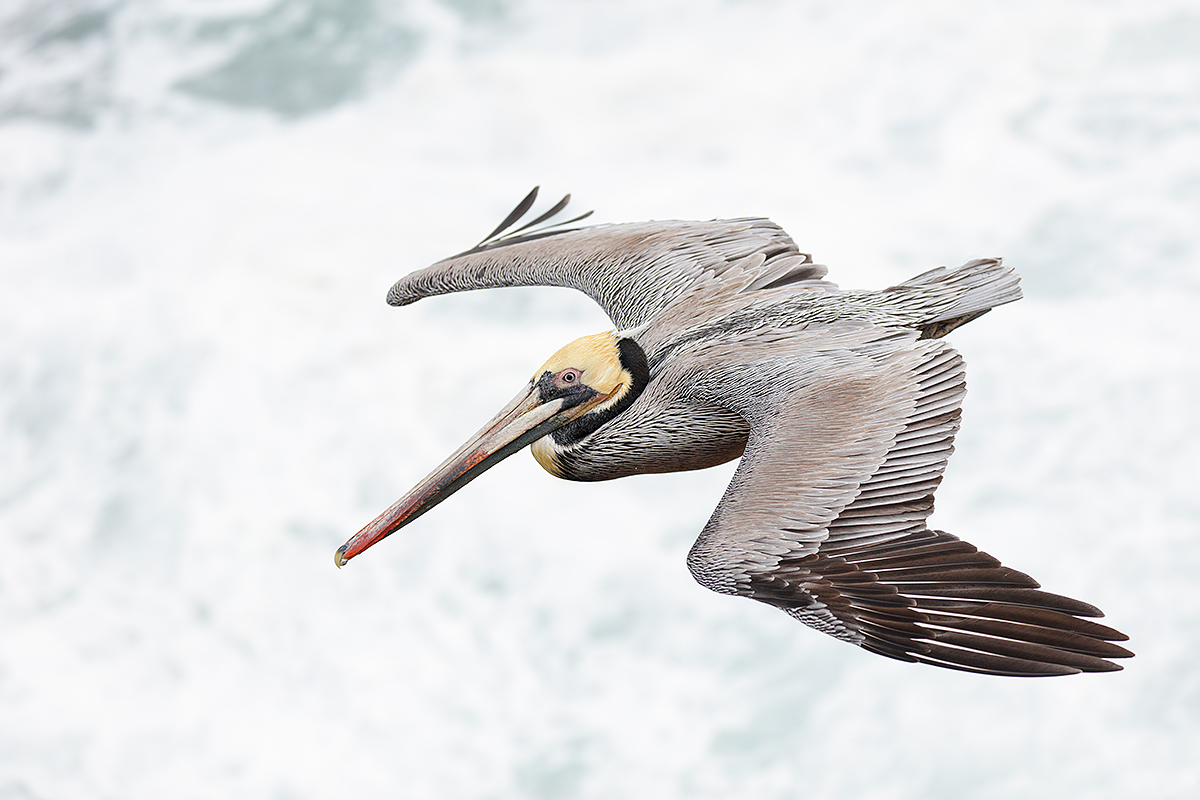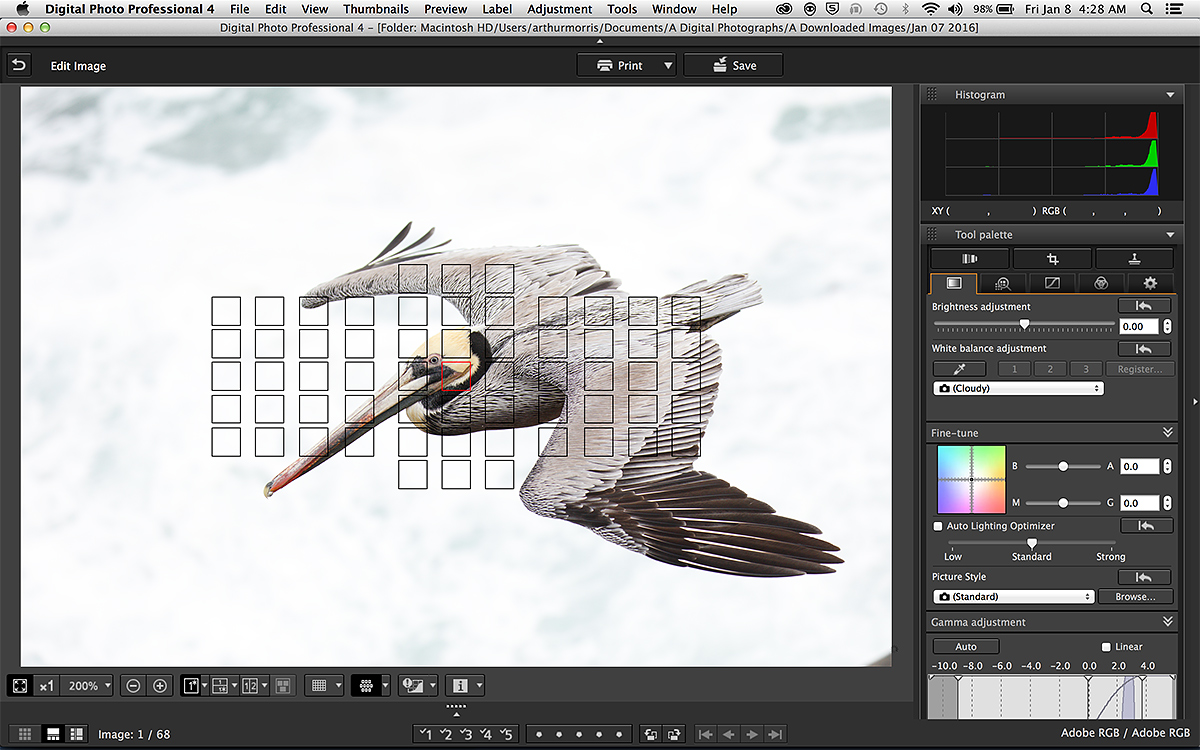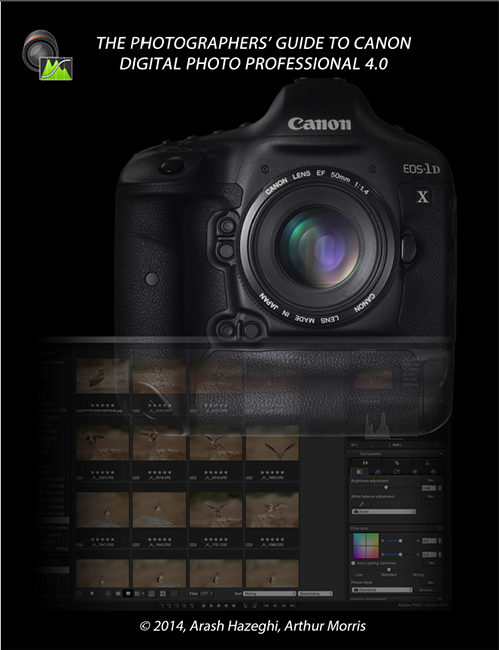What’s Up?
The 2016 San Diego IPT got off to a great start on the morning of Friday, January 8. The pelicans returned to their usual haunts and posed for the group in sweet, early morning light. The group enjoyed pre-dawn, early morning light, and full sun exposure lessons. When some of the birds left at about 9am as they usually do, it became easier to isolate single birds and easier to figure out which bird was going to do the next head throw. Everyone enjoyed the challenge. We spent our afternoon at one of my favorite beaches and got to photograph a variety of gorgeous gulls both in flight and in blue water, the latter thanks to a new creek. A lovely orange/pink sunset fizzled much too soon because of thickening clouds on the western horizon.
I used only 100-400 II for the entire day (at times with the 1.4X II TC) while co-leader Denise Ippolito did the same with her 70-200mm f/2.8L IS II with either teleconverter.
|
This image was created at La Jolla with the hand held Canon EF 100-400mm f/4.5-5.6L IS II USM lens (at 200mm) and the Canon EOS 5DS R. ISO 800. Evaluative metering +2 2/3 stops over the reading for the light gray sky: 1/800 sec. at f/5.6. Cloudy WB. On-camera fill flash (High Speed Synch) at -1 stop with the Canon Speedlite 600EX-RT Center AF point/AI Servo Expand/Shutter Button AF as framed was active at the moment of exposure (as is always best when hand holding). The selected AF point was right on the pelican’s face just behind and below the bird’s eye. See the DPP 4 screen capture below. Click on the image to see a larger version. Pacific race Brown Pelican in flight: angled dorsal view |
Sometimes When It’s Supposed to Suck… Part II
On Thursday morning, the weather forecast was “80% chance of torrential rains.” I met Patrick Sparkman at the cliffs in La Jolla as the rain first increased and then let up; we had one of our best-ever mornings at the cliffs. (You can read the whole story in yesterday’s blog post here.) I opened my eyes, saw what the birds were doing in the crazy west wind, and suggested that we move about 100 yards. We did. We had dozens of pelicans flying by at close range below eye level. Some were so close that we felt as if we could have reached out and touched them. I quickly traded my 500 II for my 100-400 II. Bingo.
Canon EOS 5DS R for Flight
The 5RS R does just fine for flight photography. Here, with its relatively slow frame rate, it allowed time for the flash to recycle. And as you can see in today’s featured image, the AF tracking is just fine. Was every frame razor sharp on the eye? Of course not; that is never the case with flight photography even with the vaunted 1D X. In addition, it was so windy that it was hard for us to get a good stable stance. BTW, this is the full frame image.
100-400 II Versatility
Note the focal length for today’s image: 200mm. Being able to zoom out while doing flight photography is a huge plus. As noted here previously I use the estimated zoom out in advance technique. Note the direction and speed of flight as a bird is approaching you, zoom out to your best estimated focal length, acquire focus as you pan, and make an image or two. At times it is possible to fine-tune your framing by zooming in or out a bit as needed.
The San Diego Site Guide
Whether you are visiting San Diego for photography for the first time or live in the area and have done the pelicans many dozens of times, you will learn a ton by studying the San Diego Site Guide. Why spend days stumbling around when you can know exactly where and when to be depending on the wind direction and sky conditions? In addition to the pelican primer, there is great info on the best beaches for the gorgeous gulls, on Marbled Godwit, on the lower cliffs, Lesser Scaup, and Wood and Ring-necked Ducks as well.
Learn more or purchase your copy here.
This is the DPP 4 Screen Capture |
The DPP 4 Screen Capture
There are two things to note above:
- The AF point–illuminated in red–is, as noted above, right where it should be, on the pelican’s face.
- The exposure is pushed far, far to the right. In spite of that, I still had to brighten the bird’s face a bit during the image optimization process.
|
You can order your copy of “The Photographers’ Guide to Canon Digital Photo Professional 4.0” (aka the DPP 4 Raw Conversion eGuide) by Arash Hazeghi and Arthur Morris by clicking here. |
The DPP 4 eGuide (PDF)
The RAW file for today’s image was of course converted in DPP 4. Learn how and why I and many other discerning photographers choose and use only DPP 4 to convert their Canon RAW files in the DPP 4 RAW Conversion Guide by Arash Hazeghi and yours truly. The latest version supports all of the newer Canon camera bodies and several older models including the EOS-7D and the EOS-1D Mark IV. The DPP IV Guide is the ideal companion to the 7D Mark II User’s Guide, a runaway best seller.
The DPP 4 eGuide (PDF) Updated for 1D Mark IV and the original 7D
The DPP 4 eGuide was recently updated to include the luminance and chrominance noise reduction values for both the 1D Mark IV and the original 7D. If you purchased your copy from BAA please e-mail Jim and request the DPP 4 1d IV/7D update. Please be sure to cut and paste page 1 into your e-mail as proof of purchase.
DPP 4 Kudos
From Richard Gollard via e-mail:
I have been doing tons of studying the books and PDFs that I have purchased from BIRDS AS ART. And I have to say that after reading the DPP 4 conversion guide that you did with Arash Hazeghi I tried DPP 4 and was blown away with the difference from the conversions that I made with Adobe Photoshop and Lightroom. Thanks for the consistently great information.


Please Remember to use our Affiliate Links 🙂
To show your appreciation for my continuing efforts here, we ask, as always, that you get in the habit of using my B&H affiliate links on the right side of the blog for all of your photo and electronics purchases. Please check the availability of all photographic accessories in the BIRDS AS ART Online Store, especially the Mongoose M3.6 tripod heads, Gitzo tripods, Wimberley heads and plates, LensCoats and accessories, and the like. We sell only what I have used, have tested, and can depend on. We will not sell you junk. We know what you need to make creating great images easy and fun. And we are always glad to answer your gear questions via e-mail. I just learned that my account was suspended during my absence; it should be up and running by Monday at the latest.
I would of course appreciate your using our B&H affiliate links for all of your major gear, video, and electronic purchases. For the photographic stuff mentioned in the paragraph above we, meaning BAA, would of course greatly appreciate your business. Here is a huge thank you to the many who have been using our links on a regular basis and visiting the BAA Online store as well.
Be sure to like and follow BAA on Facebook by clicking on the logo link upper right. Tanks a stack!
Typos
In all blog posts and Bulletins, feel free to e-mail or to leave a comment regarding any typos or errors. Just be right 🙂

















Zoom was on auto to the max. About 25 feet to the bird. And yes, flash output is greatly reduced with High Speed Synch as detailed in ABP II. Just a bit of flash on the bird. No red eye, no steel eye on this frame… a
What was the zoom setting on the Canon Speedlite EX-RT and how far away were you from the subject? Shooting high speed sync there is not as much power, how much light actually got on the bird? Nice image.